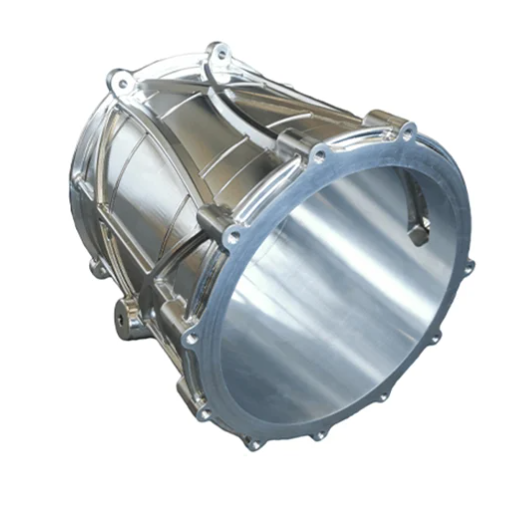5-Axis Machining is a manufacturing process that involves the use of a tool that moves in five different directions while rotating. This multi-axis subtractive manufacturing process shapes the workpiece material by moving in 5 directions: X, Y, and Z, as well as A and B. By enabling operators to approach part machining from all directions and axis in one operation, it eliminates the need for manual repositioning of the workpiece between operations. As a result, it saves time and is particularly suited for creating complex parts with precision.
A 5-axis machine is a type of CNC (Computer Numerical Control) machine that has five axes of motion: X, Y, Z, and two rotational axes. The rotational axes are usually referred to as A and B, and they provide the ability to move the cutting tool around the part being machined in more complex ways than traditional 3-axis machines. The components of a 5-axis machine include the machine bed, spindle, cutting tools, workpiece, and control system. These components work together to precisely position and move the cutting tool along the required toolpath to achieve the desired shape of the finished part.

One of the main benefits of using a 5-axis machine over traditional machining methods is the increased geometric complexity it can achieve. With two additional axes of motion, the cutting tool can reach parts of the workpiece that would be difficult or impossible to access with a 3-axis machine. This allows for greater design flexibility and the ability to create parts with more intricate shapes and features. 5-axis machining also reduces the need for multiple setups and tool changes, which can save time and improve accuracy. Additionally, since the cutting tool can approach the workpiece from different angles, there is less material waste and better surface finishes can be achieved.
There are several types of 5-axis machines, including swivel head machines, rotary table machines, and hybrid machines. Swivel head machines have a rotating head that allows the cutting tool to tilt in any direction, providing unlimited tool angles and making them ideal for complex contours and surfaces. Rotary table machines have a rotating table that holds the workpiece, allowing for continuous cutting and high productivity. Hybrid machines combine the capabilities of both swivel head and rotary table machines, providing even greater flexibility and precision. The specific application of each type of machine depends on the size and complexity of the workpiece, as well as the required tolerances and surface finishes.
5-axis machining is used in a variety of industries, including aerospace, automotive, medical, and mold-making. In aerospace, 5-axis machining is used to manufacture parts with complex contours and surfaces for aircraft engines, wings, and fuselages. In the automotive industry, 5-axis machines are used to produce engine blocks, cylinder heads, and other components with intricate shapes and features. Medical device manufacturers use 5-axis machines to create implants, prosthetics, and surgical instruments with precise geometries. Mold-making companies use 5-axis machines to produce injection molds with complex shapes and contours. Overall, any industry that requires the production of complex parts with high accuracy and surface finish can benefit from the use of 5-axis machining.
Contact us today to learn more about how our expert team can help you integrate this powerful technology into your operations!
By continuing to use the site you agree to our privacy policy Terms and Conditions.